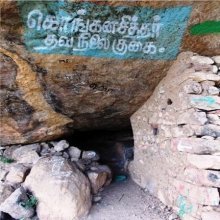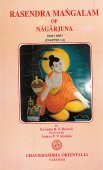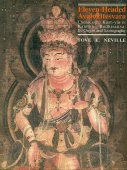Road: 2 definitions
Introduction:
Road means something in Hinduism, Sanskrit, the history of ancient India. If you want to know the exact meaning, history, etymology or English translation of this term then check out the descriptions on this page. Add your comment or reference to a book if you want to contribute to this summary article.
Images (photo gallery)
(+17 more images available)
In Hinduism
Shilpashastra (iconography)
Source: Shodhganga: Elements of Art and Architecture in the Trtiyakhanda of the Visnudharmottarapurana (shilpa)Roads in ancient Indian Painting (citra) are associated with Cities, according to the Viṣṇudharmottarapurāṇa, an ancient Sanskrit text which (being encyclopedic in nature) deals with a variety of cultural topics such as arts, architecture, music, grammar and astronomy.—In the context of identification of some particular places through picture, the Viṣṇudharmottarapurāṇa gives some instructions. According to this book, a city should be represented in a picture with various temples, mansions, markets, residences and royal roads. The lofty temples, huge mansions, markets, specious market roads etc. of the city of Ujjayinī as stated in the Kādambarī be a model for a picture of a well designed city. In the Viṣṇudharmottarapurāṇa, the picture of road is prescribed to be depicted through animals like camel carrying loads.

Shilpashastra (शिल्पशास्त्र, śilpaśāstra) represents the ancient Indian science (shastra) of creative arts (shilpa) such as sculpture, iconography and painting. Closely related to Vastushastra (architecture), they often share the same literature.
India history and geography
Source: Singhi Jain Series: Ratnaprabha-suri’s Kuvalayamala-katha (history)Roads and Streets in ancient India were beautified as part of celebrations during the “grand festival” (Mahotsava) of the coronation of a crown prince (yuvarāja-abhiṣeka), as depicted in the Kathās (narrative poems) such as Uddyotanasūri in his 8th-century Kuvalayamālā (a Prakrit Campū, similar to Kāvya poetry).—Page 199: Here is described yuvarāja-abhiṣeka-mahotsava when the city of Ayodhyā put on gala appearance by means of beautifying streets, sprinkling of scented waters on its roads, hanging of flower-garlands, putting up golden gates, adorning the palace, decorating the floor in front of the entrances, making paintings on the walls of the public audience, [...]”.

The history of India traces the identification of countries, villages, towns and other regions of India, as well as mythology, zoology, royal dynasties, rulers, tribes, local festivities and traditions and regional languages. Ancient India enjoyed religious freedom and encourages the path of Dharma, a concept common to Buddhism, Hinduism, and Jainism.
See also (Relevant definitions)
Starts with: Roadside agrimony, Roadside peppergrass.
Ends with: Broad, Cross road, Mount Road, Chennai.
Full-text (+1643): Catushpatha, Rajamarga, Apatha, Kapatha, Dvipatha, Mahapatha, Amarga, Adhvan, Supathin, Patha, Vipatha, Carapatha, Shriti, Kupatha, Unmarga, Rathya, Shroni, Vithi, Vimarga, Atipathin.
Relevant text
Search found 335 books and stories containing Road; (plurals include: Roads). You can also click to the full overview containing English textual excerpts. Below are direct links for the most relevant articles:
Settlement in Early Historic Ganga Plain (by Chirantani Das)
Part 14 - Streets of Vārāṇasī < [Chapter VI - Vārāṇasī: Emergence of the Urban Centre and Seat of Administration]
Part 15 - Commercial complex of Vārāṇasī < [Chapter VI - Vārāṇasī: Emergence of the Urban Centre and Seat of Administration]
Part 1 - Urban model of Rājagṛha < [Chapter II - Origin and Function of Rājagṛha as the seat of Monarchy]
Amarakoshodghatana of Kshirasvamin (study) (by A. Yamuna Devi)
Town Planning (5): Roads < [Chapter 3 - Social Aspects]
Town Planning (1): City < [Chapter 3 - Social Aspects]
These Witty and Humorous Road Signs < [July – September, 2006]
Diggers’ Paradise < [October – December, 2005]
He Came < [September 1945]
Brahma Sutras (Shankaracharya) (by George Thibaut)
IV, 3, 1 < [Fourth Adhyāya, Third Pāda]
III, 1, 17 < [Third Adhyāya, First Pāda]
IV, 3, 4 < [Fourth Adhyāya, Third Pāda]
Vinaya Pitaka (2): Bhikkhuni-vibhanga (the analysis of Nun’ rules) (by I. B. Horner)
Vastu-shastra (2): Town Planning (by D. N. Shukla)
Related products








